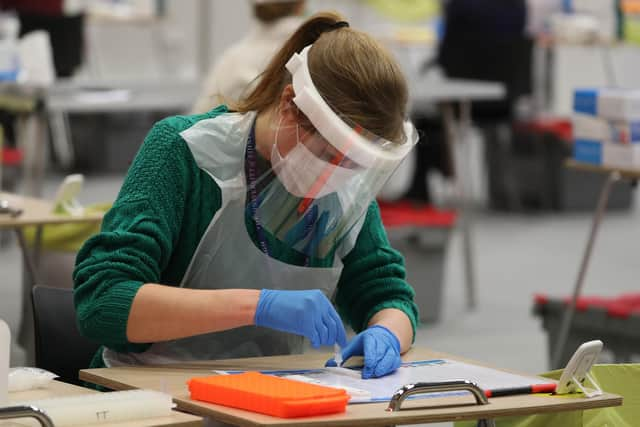How does Scotland's Covid case rate compare to the rest of the UK? - Analysis
Cases are rising, with a height of almost 50,000 reported across the UK on Monday.
There has also been “quite a steep increase” in the average daily case count over the last week, Dr Jenny Harries, Chief Executive of the UK Health Security Agency (UKHSA) told a press conference on Wednesday.
Advertisement
Hide AdAdvertisement
Hide AdDr Harries described an “unusual and and slightly worrying picture”, adding that cases are now almost as high as they were in July, and “not far off” where they were last winter.


"What we are not seeing is that dip down again at the other side of the peak, and that is really important because we are kicking off the winter at a really high level of cases,” she said.
But how do figures in Scotland compare to the rest of the UK?
It’s a slightly different story, as during the third wave there has been a difference in Covid rates north and south of the border.
Scotland has so far tended to see numbers rise, and subsequently fall, a few weeks earlier than the rest of the country.
This began in June, when Scotland saw a peak of around 4,000 daily cases at the end of the month, followed by a peak in England, and more subtly Wales and Northern Ireland, in mid July.
More recently, daily case numbers in Scotland shot up in early September, which had been predicted a few weeks after the return of schools.
This saw an infection rate of around one in 45 people, according to the Office for National Statistics – the highest ever during the pandemic so far.
Advertisement
Hide AdAdvertisement
Hide AdAt that time, the picture was better in England, with only around one in 80 people infected, and around one in 60 to 75 in Wales and Northern Ireland.
Since this high of 7,000 daily cases, numbers have fallen in Scotland.
The most recent ONS figures, which are published with a time lag, show one in 80 people infected in the week to October 9, while the rate is one in 60 in England, and even higher at one in 45 in Wales.
However, the decrease in daily case numbers in Scotland has plateaued since the beginning of October, and is now beginning to very slightly rise again.
The seven day average of cases increased from 2,417 in the week to October 9, to 2,581 in the week to October 16.
It’s not a dramatic increase, but it’s not the decline that officials and health workers want to see.
In England, cases began to markedly rise at the beginning of October, and are now continuing their upward trajectory at a more dramatic rate than in Scotland.
The seven day average case rate in England was just over 28,000 at the beginning of October, while the most recent figure is over 38,000.
Advertisement
Hide AdAdvertisement
Hide AdHowever, UK health secretary Sajid Javid announced on Wednesday that “Plan B” will not yet be implemented in England.
This would involve several restriction measures already present in Scotland, including the mandatory wearing of face coverings, vaccine passports, and asking people to work from home.
Mr Javid told the Downing Street press conference on Wednesday that the government was concerned about the number of cases, but that vaccines were “clearly working” when it came to hospital admissions and deaths.
"We’ll be staying vigilant, preparing for all eventualities while strengthening our vital defences that can help us fight back against this virus,” he said.
Both the UK and Scottish Governments are also monitoring a new mutation of the Delta variant, known as AY.4.2.
A report from the UKHSA, which recently replaced Public Health England, notes this mutation appears to be spreading in England.
Most recent figures show it accounted for around six per cent of Covid cases genetically sequenced in the last week of September.
Nicola Sturgeon said on Tuesday that the need to monitor this new mutation had been discussed by the Cabinet in Scotland.
Advertisement
Hide AdAdvertisement
Hide AdShe added: “More generally, cases here - though lower than few weeks ago - remain higher than we’d like. So please take care: wear masks, wash hands, ventilate indoor spaces & get vaccinated.”
A message from the Editor:
Thank you for reading this article. We're more reliant on your support than ever as the shift in consumer habits brought about by coronavirus impacts our advertisers.
If you haven't already, please consider supporting our trusted, fact-checked journalism by taking out a digital subscription.
Comments
Want to join the conversation? Please or to comment on this article.